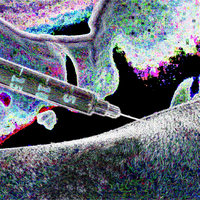| Isobutane | |
|---|---|
| Molecular structure via molpic based on CDK |
| Physical properties [] | |
|---|---|
| Molecular mass | 58.12 g/mol [1] |
| Density | 0.557 at 68 °F (USCG, 1999) - Less dense than water; will float g/cm3 [1] |
| Appearance | Colorless gas [Note: Shipped as a liquified compressed gas. A liquid below 11 °F] [1] |
| Odor | Gasoline-like or natural gas odor. [1] |
| Melting point | -255 °F (NIOSH, 2024) [1] |
| Boiling point | 10.8 ° [1] |
| Decomposition | When heated to decomposition it emits acrid smoke and irritating fumes. [1] |
| Solubility | Slight (NIOSH, 2024) [1] |
| Predicted LogP | 2.1 [1] |
| Structural Identifiers [] | |
|---|---|
| Molecular formula | C4H10 [1] |
| IUPAC name | 2-methylpropane [1] |
| SMILES | CC(C)C [1] |
| InChI | InChI=1S/C4H10/c1-4(2)3/h4H,1-3H3 [1] |
| InChIKey | NNPPMTNAJDCUHE-UHFFFAOYSA-N [1] |
Isobutane
Isobutane (also known as 2-Methylpropane, Trimethylmethane, 1,1-Dimethylethane, iso-butane, R 600a, Caswell No. 503A, R-600a, EPA Pesticide Chemical Code 097101, E943b or (Ch3)2ch-ch3)
Chemistry
Stereochemistry []
Isobutane is a achiral mixture
See also []
External links []
References []
National Center for Biotechnology Information. PubChem Compound Summary for CID 6360, Isobutane. Accessed August 5, 2025. https://pubchem.ncbi.nlm.nih.gov/compound/6360
 Anodyne
Anodyne